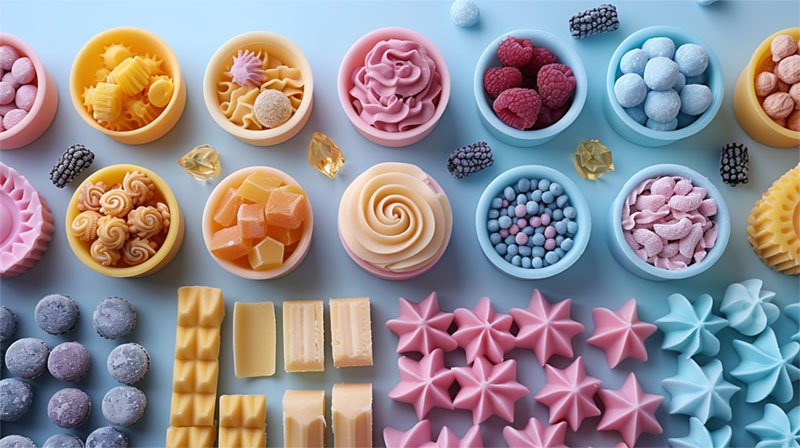Many parents want to create custom baby products at home, but is making your own silicone baby feeding set a safe option?
DIY silicone baby feeding sets can be safe if made with 100% food-grade silicone and the right manufacturing process. However, risks like contamination, improper curing, and non-certified materials can make homemade products unsafe for babies.
Before attempting to make your own silicone baby spoons, plates, or cups, it’s important to understand the materials, safety risks, and best practices.
What Is Food-Grade Silicone and Why Does It Matter?
Not all silicone is safe for babies. The quality of silicone depends on its chemical composition and manufacturing process.
Food-grade silicone is free from BPA, phthalates, and other harmful chemicals. It is designed for direct food contact, making it the only safe option for baby feeding sets.

How to Identify Safe Silicone
| Feature | Safe Silicone | Unsafe Silicone |
|---|---|---|
| Certified as Food-Grade | Yes | No |
| BPA-Free & Non-Toxic | Yes | May contain harmful chemicals |
| Odorless | Yes | May have a strong smell |
| Heat-Resistant & Durable | Yes | May degrade under heat |
If silicone is not certified as food-grade, it should not be used for baby feeding products.
Can You Make Silicone Baby Feeding Sets at Home?
Creating silicone baby products at home requires specialized materials and curing techniques. Unlike plastic or fabric DIY projects, silicone molding is more complex.
Homemade silicone baby feeding sets can be risky because curing conditions, material purity, and contamination control are difficult to manage outside a professional setting.
Challenges of DIY Silicone Baby Products
- Material Quality – Not all silicone available online is food-safe.
- Curing Process – Silicone needs controlled heat curing to remove volatile compounds.
- Contamination Risks – Home environments may introduce bacteria, dust, or other impurities.
- Durability & Strength – Homemade silicone items may tear or degrade faster.
While DIY silicone crafts can be fun, making safe, durable baby feeding products requires professional-grade equipment.
What Do You Need to Make Silicone Baby Feeding Products?
For parents still interested in DIY silicone projects, using the right materials is crucial.
Essential Materials
- Food-Grade Liquid Silicone Rubber (LSR) – Must be certified for food contact.
- Silicone Molds – Designed for baby spoons, bowls, or plates.
- Mixing Tools – To ensure even curing without air bubbles.
- Heat Curing Equipment – Some silicone types require baking to remove toxins.
Recommended DIY Silicone Products
| Product | Safe for DIY? | Notes |
|---|---|---|
| Teething Toys | ✅ Yes | Simple shapes are easier to make safely. |
| Plates & Bowls | ⚠ Maybe | Requires strong suction bases and heat resistance. |
| Spoons & Forks | ❌ No | Difficult to mold properly and ensure safety. |
| Cups & Lids | ❌ No | Risk of improper sealing and leaks. |
Teething toys are the safest DIY silicone project since they have fewer functional requirements. Plates, bowls, and utensils require careful molding and curing.
Are Store-Bought Silicone Baby Products Safer?
Yes! Professionally made silicone baby feeding sets go through strict quality control and certification processes.
Commercial silicone baby products are tested for safety, durability, and chemical exposure, ensuring they meet FDA and LFGB standards.

Why Choose Store-Bought Over DIY?
- Certified Safety – Tested for BPA, phthalates, and heavy metals.
- Strong Suction & Ergonomic Design – Engineered for real use by babies.
- Better Durability – Lasts longer without breaking or degrading.
- Easy to Clean – Dishwasher-safe and resistant to bacteria buildup.
For parents prioritizing safety, high-quality store-bought silicone feeding sets are a better choice.
FAQs About DIY Silicone Baby Feeding Sets
Is homemade silicone safe for baby feeding?
Only if 100% food-grade silicone is used and properly cured. Otherwise, contamination risks make DIY products unsafe.
Can I make my own silicone baby spoon?
It’s not recommended because spoons require precise molding, smooth edges, and durability to be safe.
How do I clean homemade silicone baby products?
Wash with hot water and mild soap. For deep cleaning, boil or use a sterilizer, just like store-bought silicone products.
Should I use a DIY silicone kit for baby items?
Unless the kit is certified for food contact, it’s safer to buy professionally made silicone baby products.
Conclusion
DIY silicone baby feeding sets can be safe, but they require high-quality food-grade materials and careful curing. Homemade items may lack the durability and safety of professional products. For parents wanting guaranteed safety, store-bought silicone feeding sets are the best choice.